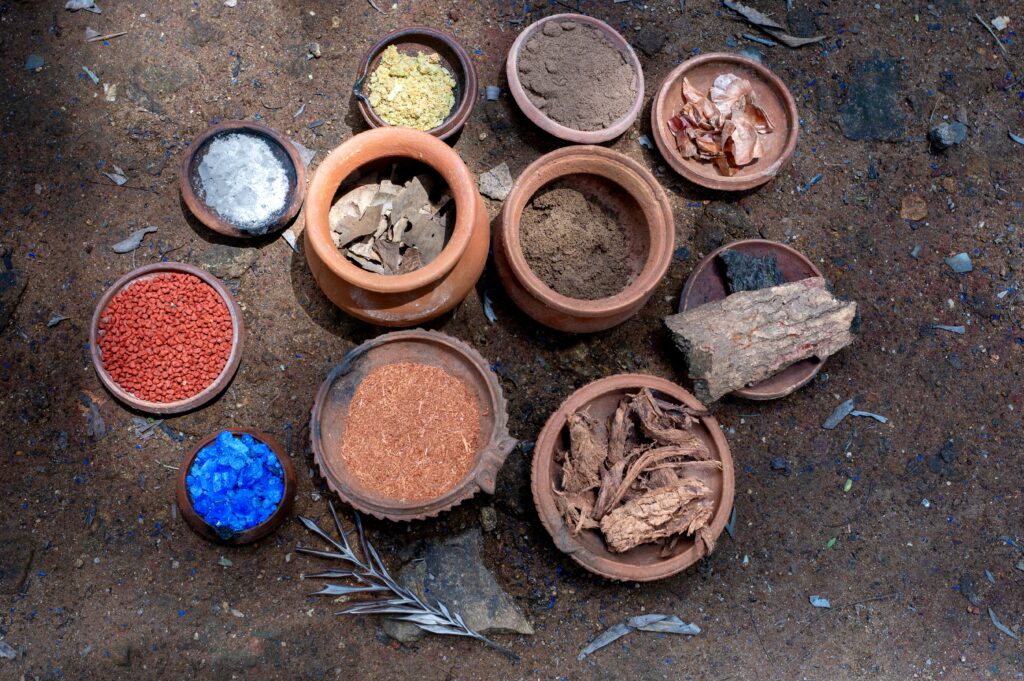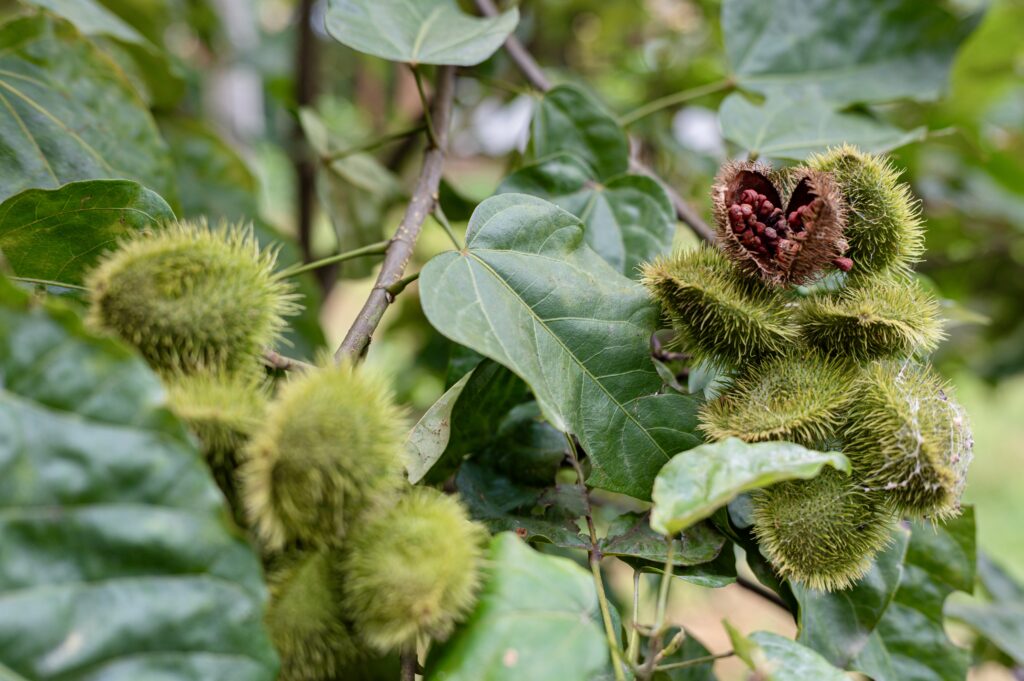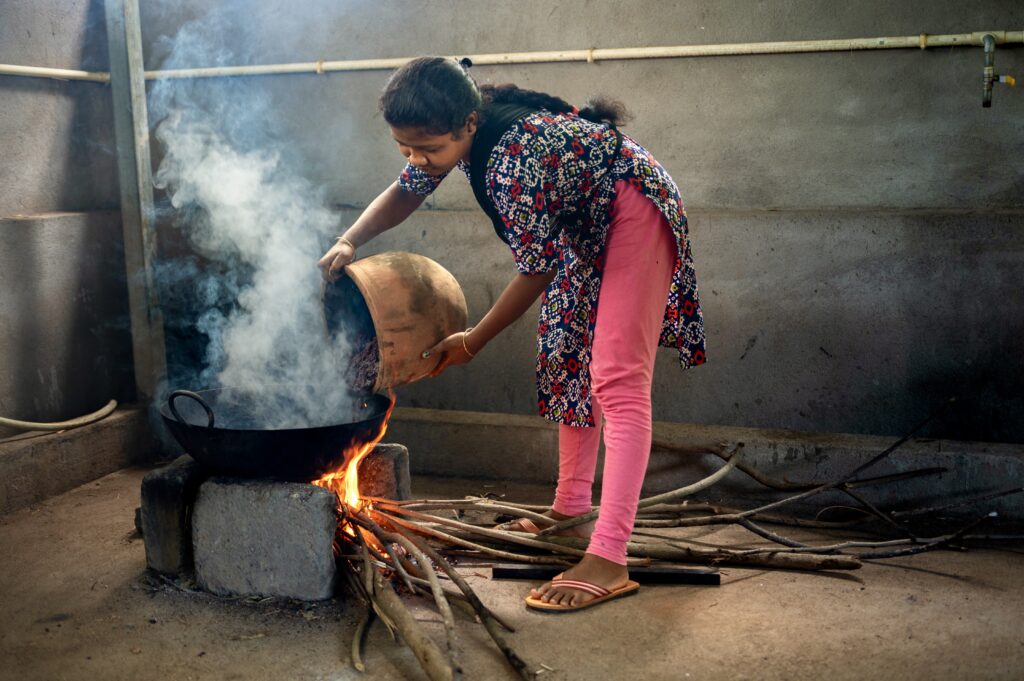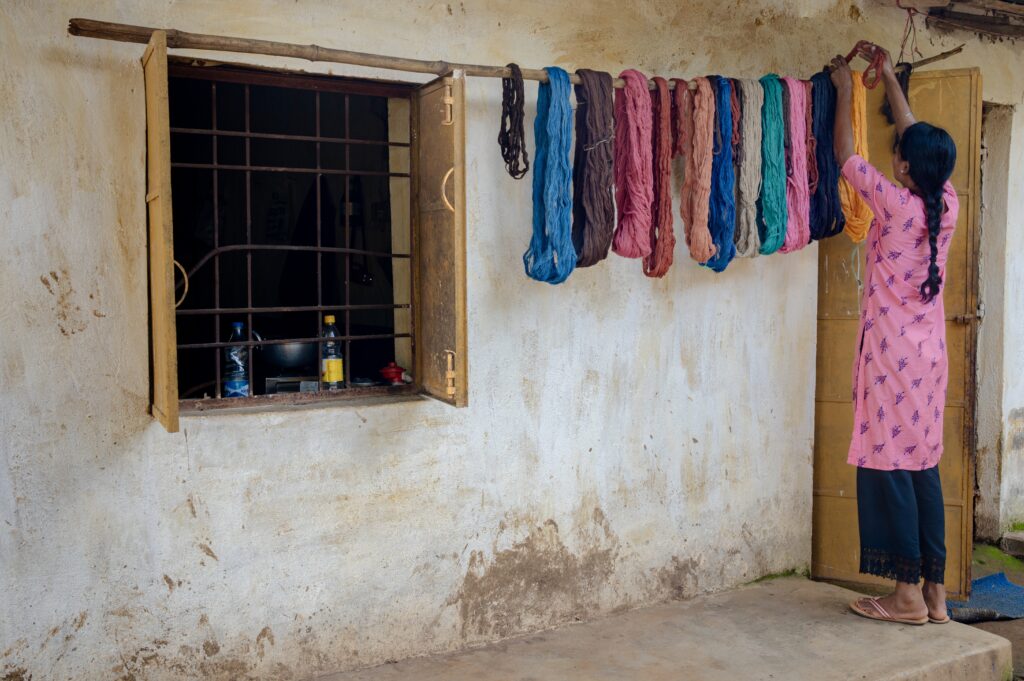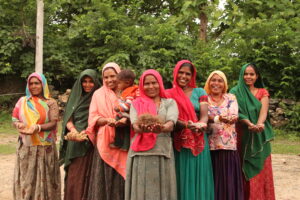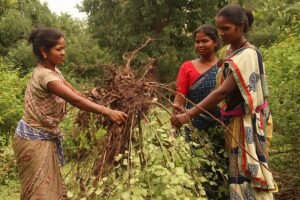[Readmelater]
Colours From Koraput Forests And The Adivasi Women Reviving Natural Dyeing
A slow and painstaking craft once linked the Adivasi communities of Odisha to their surrounding forests. It nearly died but now a group of young women are piecing it back together
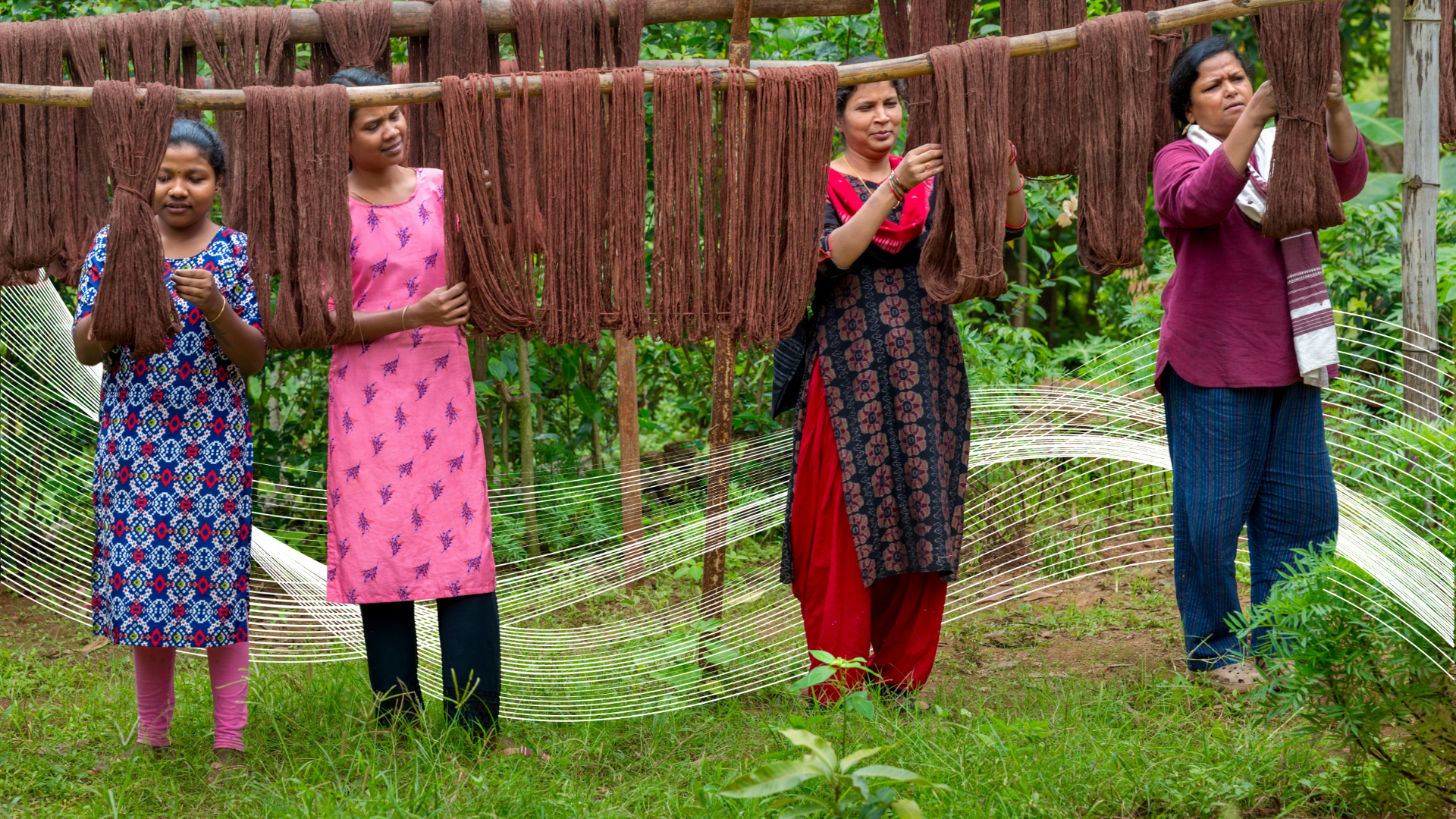
Women drying naturally dyed threads at Folkweave, Koraput/ Udayan Sarathi
Support BehanBox
We believe everyone deserves equal access to accurate news. Support from our readers enables us to keep our journalism open and free for everyone, all over the world.
